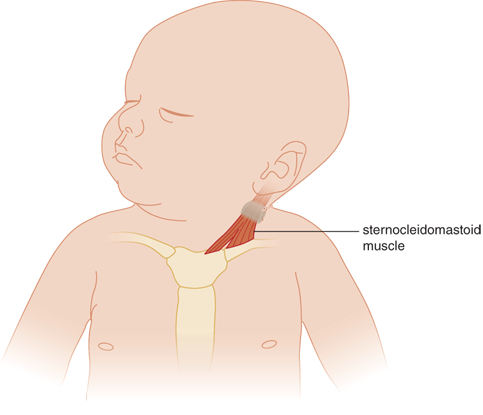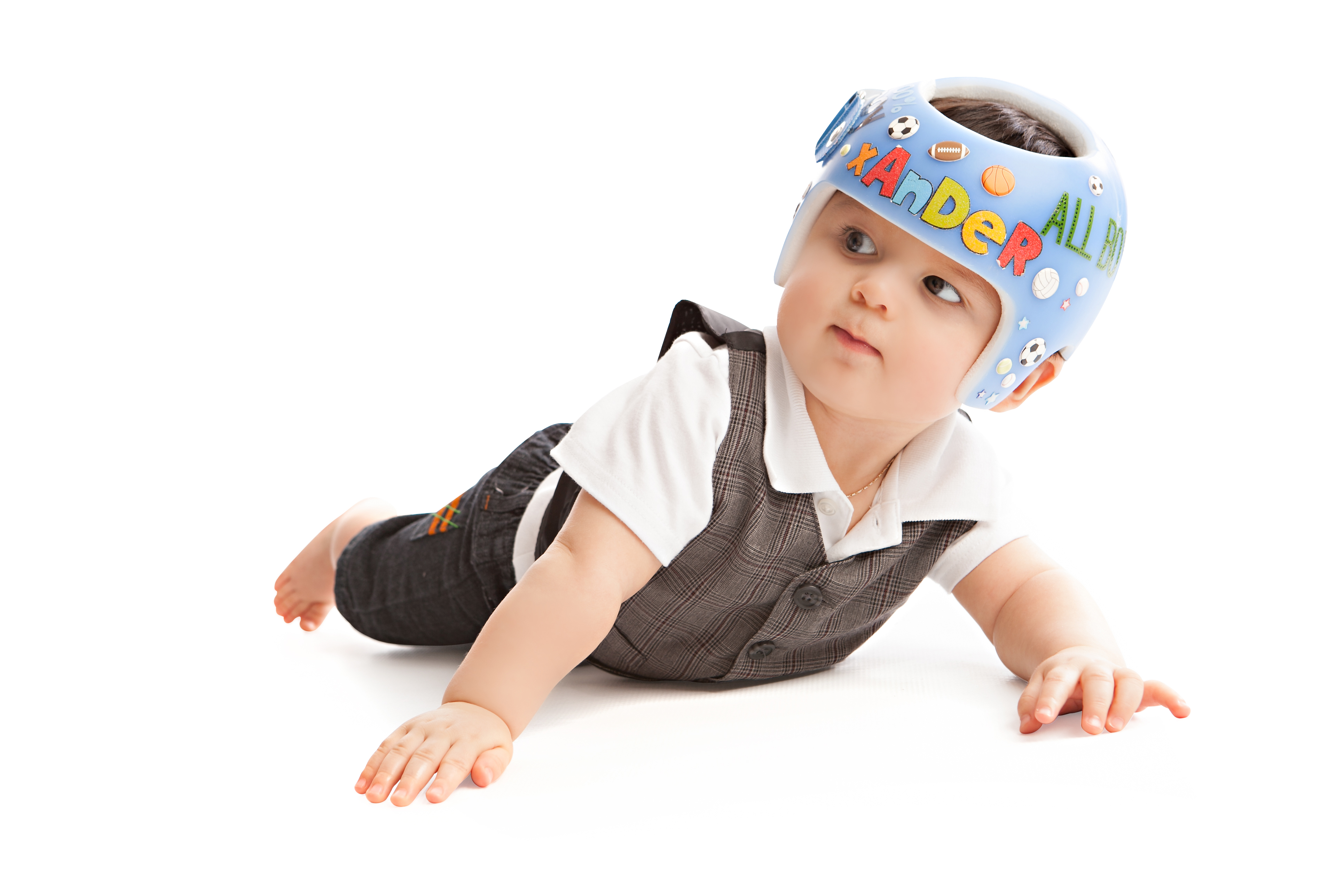What Causes Infant Torticollis and How Is It Treated?
/
Infant Torticollis
That man you saw on the street with his head slanted to the side would have a super straight posture if he had been born today. Born too soon, his parents apparently assumed that either his neck muscles were immature and the problem would be self resolved or this was his lot in life.
 Today we educationally know that this condition is called Torticollis; twisted neck or wry neck. According to a physical therapy service called , Kids Creek PT, infant torticollis results when one of the neck muscles, is either shortened or tight. The clinical name for these muscles is stemocleidomastoid or SCM also known as the rope muscle. Every baby has the SCM located on each side of the front of the neck. It begins just below the ear and attaching to the front of the collarbone. Normally, when you look down towards your stomach, two of these muscles work in unison. When only one side pulls, it tilts the head to one side as if you would be trying to touch your ear with your shoulder ( as in certain Yoga positions). The SCM muscles are also responsible for rotation of the head. For example, turning to look over your other shoulder.
Today we educationally know that this condition is called Torticollis; twisted neck or wry neck. According to a physical therapy service called , Kids Creek PT, infant torticollis results when one of the neck muscles, is either shortened or tight. The clinical name for these muscles is stemocleidomastoid or SCM also known as the rope muscle. Every baby has the SCM located on each side of the front of the neck. It begins just below the ear and attaching to the front of the collarbone. Normally, when you look down towards your stomach, two of these muscles work in unison. When only one side pulls, it tilts the head to one side as if you would be trying to touch your ear with your shoulder ( as in certain Yoga positions). The SCM muscles are also responsible for rotation of the head. For example, turning to look over your other shoulder.
How does an infant look with torticollis?
Imagine a newborn whose chin is turned to one side and its head tilted to the other. Your baby’s pediatrician will hold the head to the side and will notice the limited neck movement. Mothers might find a small bump on the side of the newborn’s neck. Since these babies have a tendency to sleep on one side of their head they tend to also develop a symptom called Positional Plagiocephaly or in layman’s terms , asymmetrical head shape. Interestingly, in 75% of the cases the right side is affected. You will also observe that the baby’s head doesn’t turn easily from side to side. Your baby will tend to look over its shoulder at you. Since he or she has trouble turning their head his or her eyes may not follow you. Another worry will be feeding time especially breastfeeding since your baby will prefer to feed on only one side. As the weeks go on the baby gets frustrated and cranky because of the difficulty in turning his head, although most doctors stress that the baby is not in any pain.

A much less common condition called, congenital torticollis is caused by abnormalities of the cervical vertebrae or neck bones. The condition called Klippel – Feil Syndrome is when the bones may be fused together or irregularly formed including two or more spinal bones in the neck (cervical vertebrae). Three major characteristics result from this vertebral fusion:
- Short neck
- The resulting appearance of a low hairline at the back of the head
- Diminished rate of motion in the neck.
Most people who are impacted have one or two of these distinct features. Less than fifty percent of all individuals with Klippel-Feil syndrome have all three classic features of this condition.
In people with a fused vertebrae, the range of movement of the neck and back is limited which may lead to headaches and muscle pain in the neck and back. People with modest bone involvement often have fewer problems compared to individuals with several vertebraes affected. The shortened neck can cause a slight difference in the size and shape of the right and left sides of the face (facial variance) . Fusion of the vertebrae can lead to nerve damage in the head, neck, or back. Over time, individuals with Klippel-Feil syndrome can develop a shrinking of the spinal canal (spinal stenosis) in the neck, which can compress and damage the spinal cord. Rarely, spinal nerve abnormalities may cause abnormal sensations or involuntary movements in people with Klippel-Feil syndrome. Affected individuals may develop an aching joint disorder called osteoarthritis around the areas of fused bone or experience painful involuntary tensing of the neck muscles (cervical dystonia). In addition to the fused cervical bones, people with this condition may have abnormalities in other vertebrae. Many people with Klippel-Feil syndrome have abnormal side-to-side curvature of the spine (scoliosis) due to malformation of the vertebrae; fusion of additional vertebrae below the neck may also be present.
People with Klippel-Feil syndrome may have a wide range of other abnormal features in addition to their spinal abnormalities. For example, hearing difficulties, eye abnormalities, an opening in the roof of the mouth (cleft palate).*
What causes Infant Torticollis?
According to the website, Kids Health from Nemours, Torticollis can be present immediately after birth or can take up to three months to be apparent. Incidentally, girls and boys are equally inclined to develop this twisted neck condition. According to Baby Center Medical Advisory Board, about one in two hundred and fifty infants are born with torticollis.
Unusual and tight positioning in uterus are likely causes of Torticollis. To be specific, cramping of the fetus , breech birth ( when the feet and buttocks come out first), or use of vacuum or forceps during childbirth increase the risk of this condition. Putting direct pressure on the babies SCM muscle can cause it to tighten making it tough for the baby to turn its neck. Even in the most simplest terms the baby’s head could have been tilted to one side in utero.
Treatment for Infant Torticollis
The earlier you call your doctor after noticing the symptoms the easier it will be to treat without any long term problems in the future. The first step the pediatrician will take is to check to see how far your baby’s head will turn. They will most likely order X-rays or even ultrasound depending on the type of torticollis your baby has. He or she might advise for your baby to be seen by a local torticollis therapy center. One in five babies with twisted necks will also have a hip problem. Delay in treatment can result in the following: delay in sitting and walking, head control, twisty crawling, tracking with his eyes, rolling to one side only, and poor balance.
Physical Therapy or Helmet treatment are considered the standard approaches. For example, one popular physical therapy exercise is Football Hold. If the baby has right torticollis, his right ear rests against the therapist’s left forearm as the baby faces away from the therapist. The therapist then places her other arm between the child’s legs and supports the baby’s body.
Chiropractic care may be an alternative to Physical Therapy if advised by your pediatrician. Some people are uncomfortable with taking their newborn to a chiropractor. It could be from personal experience themselves with a chiropractor or they worry that the chiropractor will use similar methods on their infant that he used on the parent. However, the adjustments that are done on the pediatric level are gentle and well tailored to the baby’s small stature. According to Collins Chiropractic of Burien, Washington, by restoring some movement to the cervical spine, muscles will go back into a state of ease on their own. Again, only try this method on advice of your pediatrician.
Is there any way to decrease the chances of torticollis in your infant?
An article in Parents Magazine states, that since 1992, physicians have seen an increase in head and neck problems in infants. To combat the terrible scrooge of SIDS (sudden infant death syndrome) the American Academy of Pediatrics began advising parents to lay their babies on their backs. To combat this practice, parents are presently advised that whenever possible during waking hours to give the baby tummy time.
Tummy time is an important exercise because it helps to strengthen neck and shoulder muscles as well as prepare your infant for crawling. This exercise is very helpful for a baby with torticollis and flat head syndrome . It can actually treat both problems at the same time. Lay the baby on your lap. Then position the baby’s head away from you. Then attract the baby to turn to you by singing or talking to your baby. Practice this exercise for ten to fifteen minute intervals. This amount of time may be challenging at first so try to increase the time at each session.
Another idea is play therapy. Take your baby’s favorite stuffed animal, a bright colored toy, and a noise making toy like a rattle. Move yourself around and the baby’s eyes and neck will follow you around the room. Other treatments include gentle stretches to the tight muscles as well as soft tissue massaging. A soft tissue massage includes a whole range of massage depths, pressures and time lengths.
What is the long term outlook with babies with torticollis?
The good news is, most babies with torticollis improve through stretching exercises and position change . A complete recovery may take up to six months to disappear completely and in some cases can take up to a year. In cases where there is still a tilting and stiffening of the SCM, your baby may be a candidate for muscle – release surgery. According to Ortho Info about 10% of children with congenital muscular torticollis require surgery. The operation is typically scheduled once the child reaches preschool years. The procedure will lengthen the short sternocleidomastoid muscle and may be done as an outpatient surgery meaning your child could go home the same day.
No matter what the birthing process is , newborns can experience birth trauma. Early, non invasive checkups can help your infant start his/her life on a healthy note.

Cranial Therapy Centers is the only early interventions cranial center in the United States which provides both helmet and manual therapy treatment. We are American Board for Certification in Orthotics, Prosthetics and Pedorthics Facility. Visit us in Lakewood NJ, at 1352 River Ave Unit 14, Lakewood NJ, 08701 or in Teaneck NJ at 1086 Teaneck Road Suite 3F, Teaneck, NJ 07666. You can also email us info@cranialtherapycenters.com
